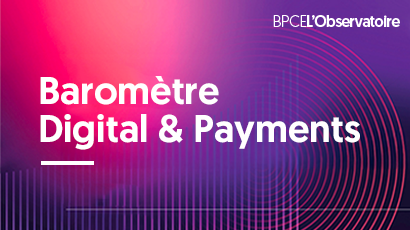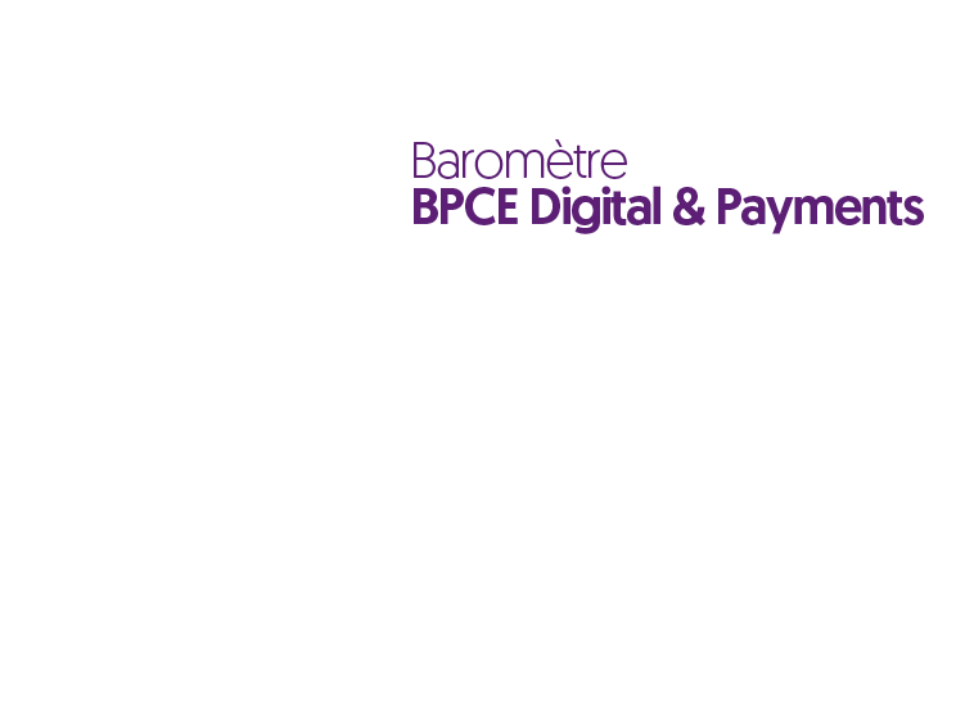

Consumption: young people in their dual role of influencers and trailblazers
[September 2025] The analysis of French consumer spending habits in the first half of 2025 made possible by BPCE L’Observatoire’s Digital & Payments Barometer survey shines a spotlight on the spending patterns of French consumers: the widespread adoption of mobile payments among young people, the rise in bargain-hunting, making a trade-off between necessity and pleasure, etc.


Consumer purchasing patterns are growing increasingly complex, paradoxical situations are overlapping and becoming inextricable, and generational behavior is fragmenting… with each consumer becoming a segment unto themselves.
In an environment such as this, what do the younger generations tell us about emerging trends? BPCE Digital & Payments draws on the combined expertise of its entities to offer a framework to help retailers anticipate and respond to changes in consumption.
Mobile payments are widely adopted by young people
Young consumers are the primary drivers of major digital transitions. The shift to digital payments is becoming standard practice for consumers under the age of 35.
Nearly 40% of payments made by people 35 years old or younger are made via smartphone, compared with only 5% for people in the over-55 age bracket, although the adoption of mobile payments among people aged 35 or more is growing, from 6% in 2023 to 13% in 2025. The average amount of mobile payments increased slightly from €18 to €21 between 2022 and 2025 but their frequency increased significantly, proving that mobile payments have become part of everyday life: shopping for clothes or gifts, shopping for groceries, small everyday expenses, etc. For digital natives, paying with their phone has become as natural as sending a message.
Nearly 40% of payments made by people under the age of 35 are completed using a smartphone.
Two other signs confirm this shift in behavior:
- Confirmation of the decline in the use of cash, with withdrawals almost halving in five years among people under the age of 25 (from 20% in 2019 to 11.5% in 2024).
- Consolidation of e-commerce, which now accounts for 37% of their spending, almost double the share noted among people aged 55 or more.
Just as the physical and digital worlds are growing increasingly intertwined in retail spending behaviors, young people’s bank cards have become a hybrid tool, switching between physical formats (including premium or personalized cards) and dematerialized versions loaded into mobile phones.
Food: priorities differ from one generation to the next
In the food sector, whether in supermarkets or restaurants, we are seeing different generations making different spending choices.
People under the age of 35 are reducing their spending on food so they don’t have to cut back on their social outings. Among people under 35, the food bill is becoming more expensive… and they are eating less, and they keep a very close eye on what they spend on groceries. Over the past four years, their average shopping basket has fallen from €28 in 2021 to €22 in the first half of 2025. This generation, which is most exposed to the lasting effects of the inflationary peak, continues to rigorously adjust their habits. Young people are not sacrificing everything, however. Eating out – even in fast food restaurants – remains a valuable way to relieve social tensions.
People aged 35-55 are also making budgetary trade-offs, with their average basket size decreasing by €4 between 2021 and 2025 (€42 vs. €38). In a context of constant trade-offs, people are keeping a close eye on the cost of restaurant outings and they are optimizing their shopping habits (the frequency of grocery shopping rose 4% in the first half of 2025, reflecting a desire to avoid waste). This is the generation that has to strike the most delicate balance between large dinner parties and the desire for conviviality.
38 euros This is the value of the average food basket for 35-55 year olds in 2025
Conversely, the over-55 year olds are driving the sector’s economic vitality: their spending on traditional restaurants now accounts for 32% of the total, compared with 24% in 2021, driven by an increase in both supermarket spending (average basket of €41) and spending in restaurants (average basket value of $40). And their appetite for eating out does not stop at traditional dishes: seniors are gradually adopting the trends of their younger counterparts, from street food to trendy concept eateries.
Increase in pragmatic spending and bargain-hunting
Faced with a constrained consumer budget, the trend is towards pragmatic spending and bargain-hunting.
Firstly, in the clothing sector: the younger generations are not compromising on style, but traditional ready-to-wear clothing is a little less aligned with their budgets. Among people under 35, overall spending is down (-14% in value), owing to a significant decline in the frequency of purchases (-21%). The average basket size, however, has increased slightly (+€2) to €54, reflecting higher unit spending despite a decline in purchase frequency.
At the same time, consumption is shifting towards more affordable options such as fast fashion (stable spending, slight increase in purchase frequency) and the choice of second-hand goods, where spending continues to grow (+6% in card spending), with an average basket value of €23. This confirms the trends already observed over the past three years: these alternatives, which reconcile tight budgets with the pleasure of consumption, are proving to be very popular.
A similar trend can be seen among seniors, with increases in purchases of both fast fashion (+12.6%) and second-hand goods (+25.6%).
Next, in the tourism sector: young adults are choosing destinations that combine a change of scenery with a low cost of living, such as Brazil (+29% tourists under the age of 35 in 2025 compared to 2024) and Thailand (+23%). The low-cost approach, however, allows for some flexibility. Some more expensive countries with strong cultural or symbolic appeal are also doing well. Japan is the most striking example, with a 14% increase in French tourists under the age of 35 in 2025, driven by the powerful appeal of manga comics.
For working people and families, tourism is increasingly a matter of careful consideration, with the additional need to take account of children’s needs. This generation remains deeply attracted to travel but chooses destinations that are accessible, diverse, and safe. They are more likely to opt for more affordable destinations such as Egypt (+42%) and the Czech Republic (+36%).
+47% Egypt is the most popular destination among the over-55s
Finally, the over-55s are showing renewed enthusiasm for travel after the end of the Covid crisis, with growth continuing for the second year in a row, with popular destinations such as Egypt (+47%) and Tunisia (+40%). This generation is not changing its habits but is confident in its ability to pick up its old habits again.
(1) BPCE Digital & Payments brings together payment and trade finance services, digital technology, AI and data, open banking, and innovation. With its 3,000 employees working under well-known brands such as BPCE, Oney, Payplug, and Xpollens, our solutions and expertise in technological innovation create value for all Groupe BPCE clients.
For more informations
-
Baromètre Digital&Payments – Jeunes générations précurseurs et influenceurs – Septembre 2025
PDF (In French only)
Download4 Mo